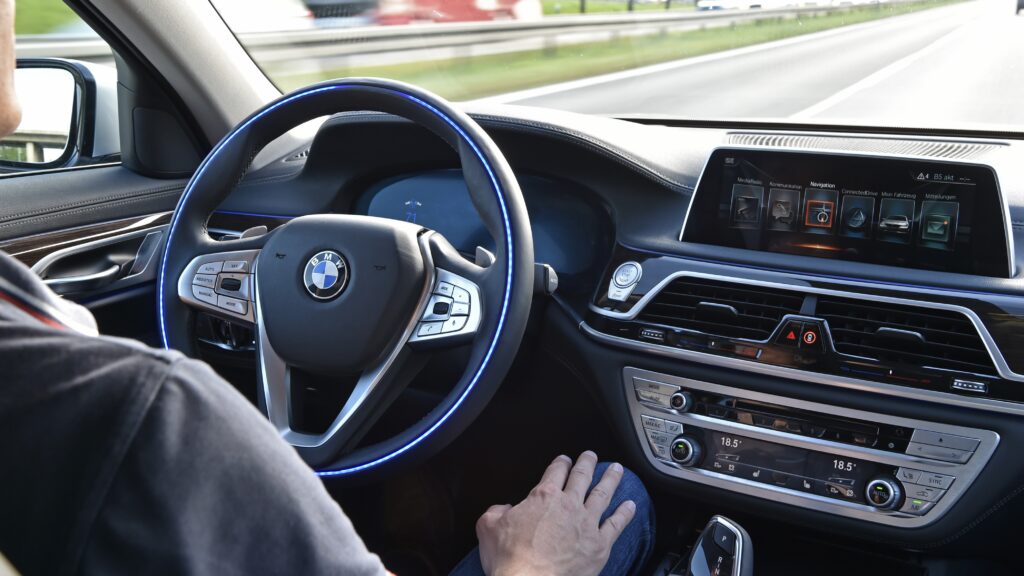Autonomous driving is the latest industry buzzword—the subject of automotive articles, videos, news outlets, and social media feeds. You can barely survive a day without the assertion of the remarkable benefits of this new technology or the astonishing horrors of its consequences. And yet, not many of us really know what it is beyond that.
I’m only an expert in my opinions, so before I continue I should point out that I am not remotely qualified to do anything but offer a perspective on this topic. Nevertheless, I think I represent a substantial group of like-minded driving enthusiasts who share a similar point of view.
Whether the technology makes sense or not, BMW has made their case for autonomous vehicles as indicated in “The Path to Autonomous Driving.” For now, BMW engineers are focused on driver assistance systems, but the future could bring much more. While I’m not at all against innovation in any industry, I do believe this topic should be approached cautiously.
If you are not familiar with autonomous driving, it is essentially the science behind a vehicle capable of sensing its environment and operating without direct human involvement. There’s a lot more to it than that of course—automation combines advanced hardware systems and artificial intelligence (AI) software to operate the vehicle.
Like many of you, I spent my earlier years pining for my driver’s license, but I was also taught to respect driving as a privilege. So, I studied the manual for my state with the intent to not only ace the test, but to educate myself on driver awareness and safety. Likewise, I thought I should learn as much on this topic before taking a position.
Through my personal research, I found that there are progressive tiers of autonomous driving that are (not always) agreed upon—generally between five and six levels, with zero as the foundation (no automation). You may actually own a vehicle without any kind of automated features, but they are getting harder to find.
Essentially, these are the levels of autonomous conditions:
- Level 0: no automation (motorist controls all aspects of driving)
- Level 1: some driver assistance (like adaptive cruise control, or parking assist)
- Level 2: partial, or hands off automation (as with ADAS—advanced driving assistance systems)
- Level 3: conditional, or eyes off driver automation (where technology takes over)
- Level 4: high driving, or mind off automation (the vehicle is equipped to control all aspects of driving)
- Level 5: full driving automation (no human intervention—like robotic taxis or delivery services)
There can be some blurring between each of these autonomous tiers, but they effectively describe a framework for the purpose of discussion. While I can accept the first three of these fairly readily, real concern for me starts at Level 3 where the extraction of the driver as an active component in operating a vehicle begins.
While I have found the subject of autonomous driving fascinating, in practice I wonder if it has the potential to be dangerous, or at the very least risky. Even if you accept the technology to be flawless in function, it might not be prudent to introduce a system that is ripe for misuse.
We’ve all seen the videos of drivers peacefully asleep or reading at the wheel in an autonomous car you can buy today. While these may be extreme cases, the potential for failure is genuine. With statistics showing the rise of distracted driving as a causality of accidents, pursuing advanced automation may degrade this condition further.
Research has shown that, statistically, more than 95% of accidents can be traced to driver error. Proponents of autonomous systems will point directly to this fact—removing the driver from the equation could effectively reduce roadway accidents and traffic deaths. While this may be true (in even a majority of cases), can we safely rely on it?
I started driving in the early seventies, and in the decades since, I’ve observed a marked degradation in overall driver attentiveness. It started well before the smartphone, though it appears this technology has significantly contributed to the decline. Smart technology can very much play a role in making us dumb.
I know that development of any kind comes with a certain amount of risk. Airbags can break your nose or burn your face, but they are more likely to save your life. As we trend toward driver apathy, certain technologies seem engineered to compensate for human shortcomings. I have to wonder if autonomous driving falls into this category by default.
Not because of the technology itself, but because it suggests the individuals behind the wheel are not essential in the driving equation. It seems to me the more we lean on automation, the more we extract driver accountability. I don’t know about you, but I expect the operator to be focused and engaged.
The problem with autonomous driving then is not the technology, but the human component. Can we really remove driver oversight of the vehicle—meaning active involvement from an alert driver? The highest levels of automation seem counterintuitive to this assertion.
There is certainly a place for automation, especially in automotive safety systems. But in reducing the risk associated with human error through autonomous technology, we may simultaneously absolve driver responsibility.
I support automation of safety systems, but it seems to me that just because we can engineer advanced autonomous driving, it doesn’t mean that we should. This very complex issue comes down to whether or not this is the road we want to travel. I’m not so sure that it is. Are you? —David Newton
[Photos courtesy of BMW.]
